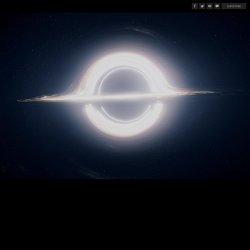

Documentary National Geographic 2014 Monster Black Holes Full Documentary HD. The Largest Black Holes in the Universe. How Building a Black Hole for Interstellar Led to an Amazing Scientific Discovery. Franklin knew that his computers would do anything he told them to.

That was a problem and a temptation. “It's very easy to fall into the trap of breaking the rules of reality,” says Franklin, a senior supervisor of Academy Award-winning effects house Double Negative. “And those rules are actually quite strict.” So he asked Thorne to generate equations that would guide their effects software the way physics governs the real world. They started with wormholes. Thorne sent his answers to Franklin in the form of heavily researched memos. McConaughey explores another world in Interstellar (top). Diagrams courtesy of Kip Thorne Their success with the wormhole emboldened the effects team to try the same approach with the black hole. Some individual frames took up to 100 hours to render, the computation overtaxed by the bendy bits of distortion caused by an Einsteinian effect called gravitational lensing. Von Tunzelmann tried a tricky demo.
Rare 'Missing Link' Black Hole Apparently Found. A newfound cosmic object may be a long-sought missing link that could help flesh out the black hole family tree.

The object appears to be an intermediate-mass black hole (IMBH), astronomers say. Called NGC-2276-3c, it lies in an arm of the spiral galaxy NGC-2276, about 100 million light-years from Earth. IMBHs are thought to contain the mass of a few hundred to a few hundred thousand suns. The black holes are therefore intermediate in size between stellar-mass black holes and the behemoths that lurk at the hearts of galaxies, which can harbor billions of solar masses.
[Images: Black Holes of the Universe] Researchers have long hypothesized the existence of IMBHs, which are believed to be the seeds from which supermassive black holes grow. HubbleSite: Black Holes: Gravity's Relentless Pull. Black holes are places where ordinary gravity has become so extreme that it overwhelms all other forces in the Universe.

Once inside, nothing can escape a black hole's gravity — not even light. Yet we know that black holes exist. We know how they are born, where they occur, and why they exist in different sizes. We even know what would happen if you fell into one. Our discoveries have revealed one of the strangest objects in the Universe, and there's still much we don't know. The nearest black hole is many lightyears away, so we don't have to worry about threats to the Earth. For a fully interactive multimedia experience, click Journey to a Black Hole (fast internet connection recommended). Black Holes. Black Holes Don't let the name fool you: a black hole is anything but empty space.

Rather, it is a great amount of matter packed into a very small area - think of a star ten times more massive than the Sun squeezed into a sphere approximately the diameter of New York City. The result is a gravitational field so strong that nothing, not even light, can escape. In recent years, NASA instruments have painted a new picture of these strange objects that are, to many, the most fascinating objects in space. Although the term was not coined until 1967 by Princeton physicist John Wheeler, the idea of an object in space so massive and dense that light could not escape it has been around for centuries. Scientists can't directly observe black holes with telescopes that detect x-rays, light, or other forms of electromagnetic radiation. Gigantic Black Hole Discovered From the Dawn of Time.
Michael D.

Lemonick Astronomers have identified a mammoth black hole weighing as much as 12 billion suns. It's not the biggest black hole ever found, but it's astonishingly young. The giant appears to have swelled to its enormous size only 875 million years after the big bang, when the universe was just 6 percent of its current age. That's a surprise, astronomers report Wednesday in the journal Nature, because giant black holes are thought to grow relatively slowly by vacuuming up gas and even stars that venture too close. "How do you build such a big black hole in such a short time? " Bright Beast Wu and his colleagues didn't see the black hole directly, since by definition it has such powerful gravity that nothing, including light, can escape from it.
"This is the biggest monster we've ever detected in terms of luminosity," says Avi Loeb, chair of the Harvard astronomy department, who was not involved in the research. Like all quasars, the new object looks like an ordinary star. Astronomers Discover A Supermassive Black Hole Dating To Cosmic Dawn. A supermassive black hole, like the one illustrated here, has been discovered 12.8 billion light years away, at the center of an exceptionally bright quasar.

NASA/JPL-Caltech hide caption itoggle caption NASA/JPL-Caltech A supermassive black hole, like the one illustrated here, has been discovered 12.8 billion light years away, at the center of an exceptionally bright quasar. NASA/JPL-Caltech SDSS J0100+2802 is the rather understated name scientists have given to an exceptionally luminous, newly discovered quasar. It's far more massive than any other known black hole from that time, and astronomers aren't sure how it grew so big so fast.